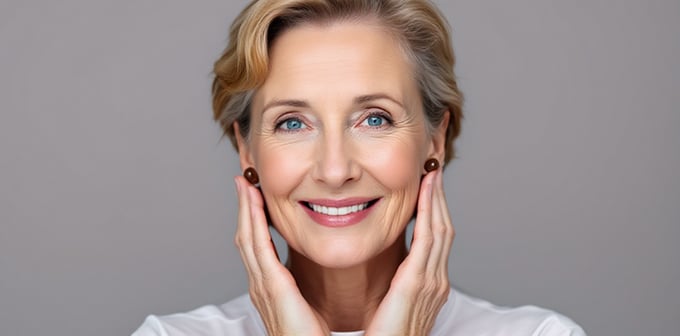
The aesthetic medicine landscape is continually evolving, with neuromodulators remaining at the forefront of non-surgical rejuvenation. While the field was once dominated by a single brand, medical professionals now have access to a diverse array of high-quality botulinum toxin type A products. Understanding the distinct profiles of each option is not just beneficial for tailoring treatments; it’s essential for optimizing patient outcomes and practice efficiency.
This comprehensive guide delves into the world of botulinum toxins, offering a detailed analysis of leading brands like Botox®, Dysport®, Xeomin®, and Botulax. We aim to equip you with the knowledge necessary to make informed clinical decisions for your patients, ensuring you deliver predictable, safe, and satisfying results.
What Are Botulinum Toxins (Neuromodulators)?
Botulinum toxins, commonly referred to as neuromodulators, are purified proteins that, when injected in small, targeted amounts, temporarily relax specific muscles. This relaxation smooths out dynamic wrinkles – those lines that form from repetitive facial expressions like frowning, squinting, or raising eyebrows. Beyond aesthetics, they also have numerous therapeutic applications, including the treatment of hyperhidrosis (excessive sweating) and muscle spasms.
These injectable substances have revolutionized aesthetic medicine due to their efficacy, minimal invasiveness, and ability to provide a more youthful and refreshed appearance without surgery. Their precise action targets the underlying muscle activity that causes wrinkles, rather than simply filling them, offering a nuanced and natural-looking result.
The Science Behind Neuromodulators: How They Work
All botulinum toxin type A products operate on the same fundamental principle: they block the release of acetylcholine, a neurotransmitter, at the neuromuscular junction. Acetylcholine is responsible for signaling muscles to contract. By interrupting this signal, the injected muscle temporarily relaxes, which in turn smoothes the overlying skin and reduces the appearance of dynamic wrinkles.
The active component is a neurotoxin protein, which, depending on the brand, may be associated with various complexing (or accessory) proteins. These accessory proteins are thought to protect the core neurotoxin molecule until it reaches its target. Once injected, the toxin is taken up by the nerve cell, where it acts to cleave the SNAP-25 protein, preventing the vesicle containing acetylcholine from fusing with the nerve ending membrane. This biochemical blockade is temporary, typically lasting 3-4 months, after which new nerve endings regenerate, and muscle function gradually returns.
Understanding Botulax: A Foundational Overview
Botulax is a purified botulinum toxin type A that, like some other leading brands, is stabilized by accessory proteins (hemagglutinins). Its mechanism of action is consistent with all products in its class: it works by cleaving the SNAP-25 protein at the neuromuscular junction, which prevents the release of acetylcholine. This temporary and targeted muscle relaxation is what effectively smoothes dynamic wrinkles.
A key attribute of Botulax is its reputation for high purity, often cited as exceeding 99%. This is a critical factor in its safety profile and predictable efficacy. It is available in 100-unit and 200-unit vials, offering practitioners flexibility for various treatment volumes and clinical settings.
Profiling the Major Brands: Botox®, Dysport®, and Xeomin®
To understand where Botulax fits in, it’s helpful to quickly profile the other major players in the market:
- Botox® (OnabotulinumtoxinA): The original and most widely recognized product from Allergan/AbbVie, often considered the industry’s “gold standard.” It is also complexed with accessory proteins and has the most extensive long-term clinical data.
- Dysport® (AbobotulinumtoxinA): From Galderma, this product is also stabilized by complexing proteins but has a different molecular weight. It is well-known in clinical practice for its characteristic of wider diffusion from the injection point.
- Xeomin® (IncobotulinumtoxinA): Developed by Merz Aesthetics, Xeomin® has a unique molecular structure. It is a “naked” or pure form of the toxin, free from the complexing proteins found in other brands. This also gives it the logistical advantage of not requiring refrigeration before reconstitution.

Core Comparison: Botulax vs. Other Leading Brands
While head-to-head clinical trials provide formal data, much of the practical comparison comes down to practitioner experience and understanding the subtle differences in product characteristics. It is crucial to remember that final outcomes are always influenced by the practitioner’s technique, dosage accuracy, and individual patient anatomy.
Molecular Structure & Complexing Proteins
Botulax and Botox® are similar in that their core toxin is stabilized by protective proteins. Xeomin® is the outlier, containing only the active neurotoxin. The clinical theory behind this is that the absence of these extra proteins may reduce the risk of a patient developing antibodies over long-term use, though the clinical significance of this for the majority of aesthetic patients remains a topic of discussion among experts.
Unit Potency & Dosing Ratios
This is the most critical factor for day-to-day practice. For consistent results when switching between products, practitioners generally adhere to the following conversion ratios:
- 1 : 1 : 1 Ratio: A unit of Botulax is considered equivalent to a unit of Botox® and a unit of Xeomin®.
- ~2.5-3 : 1 Ratio: Practitioners typically use 2.5 to 3 units of Dysport® to achieve the same clinical effect as 1 unit of Botox® or Botulax.
These ratios are widely accepted clinical guidelines, but final dosing always requires professional judgment.
Onset, Duration, and Diffusion
- Onset: Most products show initial effects within 2-5 days, reaching peak results around day 10-14. Some practitioners anecdotally report that Dysport® may have a slightly faster onset for certain patients.
- Duration: When dosed appropriately, all major neuromodulators provide a similar duration of effect, typically lasting 3 to 4 months.
- Diffusion (Spread): Dysport® is known to have a wider field of effect, meaning it spreads more from the injection site. This can be an advantage for treating large, smooth areas like the forehead. In contrast, Botulax, Botox®, and Xeomin® are generally considered to have a more focused, localized effect, which requires less of a buffer zone and is often preferred for precise work around the eyes to avoid complications like ptosis.
Comparative Overview Table
| Feature | Botulax | Botox® | Dysport® | Xeomin® |
|---|---|---|---|---|
| Core Toxin | Botulinum Toxin Type A | Botulinum Toxin Type A | Botulinum Toxin Type A | Botulinum Toxin Type A |
| Complexing Proteins | Yes | Yes | Yes | No (“Naked” Toxin) |
| Unit Ratio (vs. Botox®) | ~ 1 : 1 | 1 : 1 (Baseline) | ~ 2.5-3 : 1 | ~ 1 : 1 |
| Diffusion/Spread | Focused | Focused | Wider | Focused |
| Storage (Pre-mixing) | Refrigeration (2-8°C) | Refrigeration (2-8°C) | Refrigeration (2-8°C) | Room Temperature |
| Primary Value Proposition | Comparable efficacy and safety profile | Extensive long-term data, brand recognition | Rapid onset, effective for large areas | No complexing proteins, convenient storage |
The Practitioner’s Edge: Clinical Considerations for Botulax
For any medical practice, the decision to incorporate a new product is based on clinical factors. Extensive clinical use has shown that Botulax provides results that are comparable to the market leaders in both efficacy and duration. Practitioners can integrate it into their practice with confidence, expecting predictable and satisfying outcomes for their patients when adhering to proper injection protocols and product handling standards.
Ensuring Authenticity and Safety: A Practitioner’s Imperative
The integrity of your neurotoxin supply chain is non-negotiable for patient safety and the reputation of your practice. As a medical professional, it is your imperative to ensure that all products used are:
- Authentic and Legitimate: Counterfeit or improperly labeled botulinum toxins pose significant health risks due to unknown purity, concentration, or sterility.
- Properly Handled and Stored: Botulinum toxins are heat-sensitive biologics. It is crucial to maintain a strict cold chain during shipping and storage (for most brands), both before and after reconstitution.
- Regulatory Approved: Practitioners must confirm that the products they use are approved by the relevant regulatory bodies in their region for their intended use.
Rigorous adherence to these best practices protects your patients from adverse events. Diligence in product integrity is as critical as precision in injection.
Conclusion: Making an Informed Choice in a Diverse Market
The modern neuromodulator market provides medical professionals with several excellent, scientifically-backed options, each with a distinct profile. Botulax has firmly established itself in this landscape, offering clinical efficacy and safety comparable to other established brands.
Ultimately, the “best” neuromodulator is a strategic choice based on practitioner preference and specific patient needs. By understanding the key characteristics of each product—from molecular structure to unit conversion and diffusion—practitioners are empowered to make the most informed decisions, ensuring optimal outcomes for their patients and continued success for their clinic.
After comparing the clinical characteristics of these neurotoxins, medical professionals looking to source Botox supplies or other leading aesthetic brands can connect with our network of verified wholesale suppliers through our platform.
FAQs: Botulinum Toxins and the Neuromodulator Landscape

About the Author: Doris Dickson is a specialist writer for Health Supplies Plus, focusing on the aesthetic medicine industry. She diligently researches cosmetic treatments and products to provide clear, concise information relevant to licensed medical professionals. Her work supports Health Supplies Plus’s commitment to being a reliable informational resource and trusted supplier for the aesthetic community.
Disclaimer: The content provided in this article is intended for informational purposes only and is directed towards licensed medical professionals. It is not intended to be a substitute for professional medical advice, diagnosis, or treatment, nor does it constitute an endorsement of any specific product or technique. Practitioners must rely on their own professional judgment, clinical experience, and knowledge of patient needs, and should always consult the full product prescribing information and relevant clinical guidelines before use. Health Supplies Plus does not provide medical advice.
